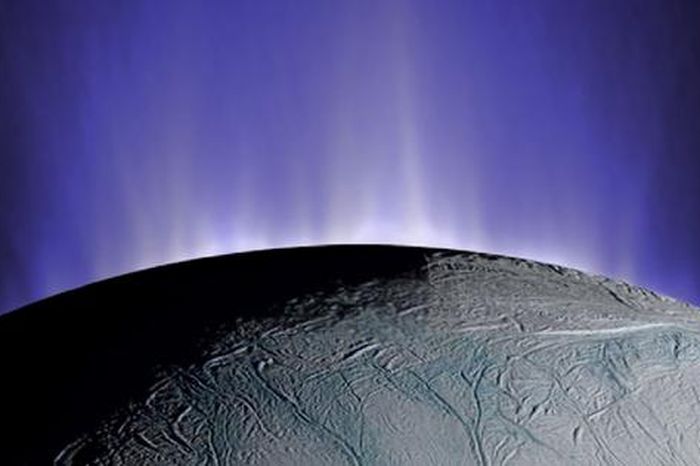Discovered evidence that 'Solar System 2.0' has water
The Solar System 2.0 is the Trappist-1 star system of 7 Earth-sized planets, about 40 light-years away, discovered by scientists in early 2017. In particular, there are few most 3 planets have the potential to own liquid water. After that, a lot of doubts about the ability of these planets to sustain life were given.
- NASA announced concussion: 7 Earth-sized planets could have life
- 5 interesting facts about TRAPPIST-1, solar system version 2.0
But recently, a group of scientists led by Vincent Bourrier - a Swiss astronomer at Observatoire de Genève University observed several planets in the star-planet system Trappist-1 containing the most important thing to life maintenance - water.

Specifically, scientists used the spectral imaging system (STIS) from the Hubble Space Telescope to explore the interaction of ultraviolet rays between planets in the system. Ultraviolet rays can break down the vapor molecules in the atmosphere, forming hydrogen and oxygen which reveal to them about their atmospheric environment. In addition, STIS can help them identify the presence of hydrogen around the atmosphere of each planet, and thus prove that there is steam.
From the results, experts identified Trappist-1b and Trappist-1c, the two closest planets that are most likely to contain a lot of water. They said it is very possible that the amount of water on these two planets is equivalent to 20 times the amount of water in the oceans on Earth.
 Position 7 planets in Tranppist - 1.
Position 7 planets in Tranppist - 1.
However, according to Bourrier, the remaining planets may not be so lucky. All three planets of the Goldilock region are 1e, 1f and 1g more likely to have water on the surface but have lost a lot.
All of these are just the scientists' group's hypothesis for telescopes and data, but they have not made any conclusions. But even if the Trappist-1 system contains water, it is unlikely that life could exist on these planets. Because they are so close to the host star, and the solar storm can make things impossible.
Even so, scientists are continuing to study, because this is still the greatest hope of people.
You should read it
- Photos of 7 planets may exist in the Trappist-1 star system
- NASA announced concussion: 7 Earth-sized planets could have life
- 5 interesting facts about TRAPPIST-1, solar system version 2.0
- How long does it take to get up to 7 life-capable planets - has Trappist-1 been discovered?
- NASA revealed the first studies of the planet's outer atmosphere
- Maybe the Solar System 2.0 is not the 'cradle of nurturing life' as NASA hopes
- If people 'occupy' the Sun 2.0 system, how different is life there from Earth?
- Cosmic Science: The star system TRAPPIST-1 does not 'exist' the big Moon
- 'Planet Hunters' are looking for signs of extraterrestrial life around nearby stars
- Discovering two 'super-Earths' only 12 light-years away can hide life
- Discover the strange green planet HD 189733b outside the solar system
- Successfully measuring weather systems on planets outside the solar system
May be interested

Discover a monster black hole 100,000 times bigger than the Sun, the second largest in the Milky Way

NASA's Cassini spacecraft is about to commit suicide on Saturn next week

If 'stray' to any planet in the solar system, what is your chance of survival?

NASA broadcast live the event of the self-destructive Cassini probe on Saturn at 1732 this afternoon, we can see

How long does one day on the solar system planets last?

The journey of 20 years in the universe of Cassini through impressive numbers






 Is solar water heater heating water good?
Is solar water heater heating water good? Traces of life in an unexpected place in the middle of the solar system
Traces of life in an unexpected place in the middle of the solar system How is solar water heater structured, working?
How is solar water heater structured, working? Top 5 solar water heaters have very good feedback from customers
Top 5 solar water heaters have very good feedback from customers What type of solar water heater, electric water heater should be purchased?
What type of solar water heater, electric water heater should be purchased? Maybe the Solar System 2.0 is not the 'cradle of nurturing life' as NASA hopes
Maybe the Solar System 2.0 is not the 'cradle of nurturing life' as NASA hopes